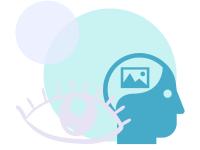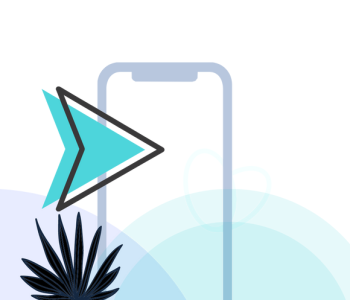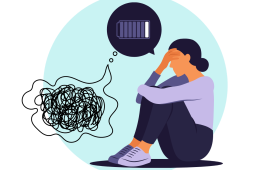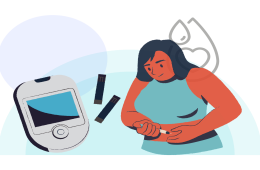5 app features that can assist individuals with Down syndrome
Many communities such as individuals with Down syndrome (DS) find it difficult to maneuver through the tech landscape because of a lack of inclusive features.
Existing research in Universal Accessibility related to individuals with DS is quite limited. (1)

How to increase accessibility to digital tools for individuals with Down syndrome (DS)
In this article we will be discussing five features that can increase accessibility of individuals with Down syndrome (DS) to digital tools.
Introduction:
The boom in technological advancements in twentieth century have made it an integral part of our lives. However, not everyone has equal access to it.
Many communities such as individuals with Down syndrome (DS) find it difficult to maneuver through the tech landscape because of a lack of inclusive features. Existing research in Universal Accessibility related to individuals with DS is quite limited. (1)
The following is a list of 5 features that can ensure digital inclusivity for individuals with Down syndrome:
1. Simple design
Individuals with Down syndrome often experience cognitive and motor impairments which requires special consideration in the design of technology and related apps. For example, user experience is unsatisfactory if there is a lot happening on the app. If users are expected to perform and understand multiple tasks at the same time, it might end up being a source of distraction and frustration. (1)
There is a need to simplify apps, so the focus is only at the action at hand. Moreover, complicated steps need to be broken down into simpler action lists. This will allow users to focus on assessing and understanding one action at a time.
2. Visual cues
Individuals with Down syndrome are strong visual learners. (2) Good application design will need to include icons and images to guide them to their action lists.
Since visual learning is preferred, it is also recommended that the amount of text is decreased as much as possible, limiting to only the most essential information that otherwise cannot be conveyed as images.

3. Adaptable to different needs
An important challenge for software design for individuals with DS is that there is a discrepancy in developmental pace of cognitive and analytical capabilities and development of preference and taste.
For example, a ten-year-old child with DS might need to learn simple mathematical skills of a typical seven-year-old child, but the software design that are available for typical seven-year-old children might seem naïve and boring to ten-year-old individuals with DS (e.g., cartoonish characters, exaggerated tones, and features, etc.)
This creates an important paradox – individuals with DS often outgrow the digital tools that teach them the skills they need to learn. (1)
As individuals with DS progress in gaining skills through their lifetime, their needs change. Therefore, at every age and stage of development they might need access to a different form of data input to assist them in using digital platforms.
4. Enhance digital skills through gamification
Apps can be a great tool for learning skills for individuals with Down syndrome such as maneuvering digital devices, accessing information on the internet, etc.
Gamification is the process of using game elements in a non-game context. It has many benefits over traditional methods of learning such as increasing motivation levels and knowledge retention along with better user engagement through elements such as badges, points, leaderboards, challenges etc. (3)
In order to encourage the use of digital tools in individuals with DS, gamification might be of help. Although, it is strongly advisable that software developers pay special attention to making sure that gamification should match the age and skill level of its users.

5. Developed in collaboration with patients, families, and specialists
Importance of user input in development of any digital tool cannot be understated. This becomes even more important while developing tools for individuals with DS, because only extensive user testing can help developers understand the unique needs of the population.
Developers need to ensure that individuals with DS, their families and specialists have considerable input in the design and roll-out of any digital tool. Utmost priority needs to be given to the idea that any digital tool should support the users’ current environment and adds to their life in a positive manner.
Conclusion:
In order to tackle digital exclusion for individuals with Down syndrome, it is imperative that we build apps with features that consider the challenges that they face. In this regard, it is important the tools being developed are simple, easy to use, visual, and adaptable to different needs.
Bibliography
1. Feng J, Lazar J, Kumin L, Ozok A. Computer Usage by Children with Down Syndrome. ACM Trans Access Comput [Internet]. 2010 Mar 1 [cited 2022 Jul 1];2(3). Available from: https://dl.acm.org/doi/abs/10.1145/1714458.1714460
2. Strategies for Learning and Teaching | National Council for Special Education – CPD and In-School Support [Internet]. [cited 2022 Jul 1]. Available from: https://www.sess.ie/categories/assessed-syndromes/downs-syndrome/tips-learning-and-teaching
3. Gamification For Learning: Strategies And Examples – eLearning Industry [Internet]. [cited 2022 Jul 1]. Available from: https://elearningindustry.com/gamification-for-learning-strategies-and-examples
Insights
-

No-Code Tools for Managing Mental Health and Burnout in Healthcare Settings
Read more“P4” is a term that is often associated with future of medicine – prediction, prevention, personalization and patient participation. Many current health related technologies have already started moving towards the future and many more innovations are yet to come, that will make the goal of holistic medicine true.
-

Impact of health technology on diabetes management
Read more“P4” is a term that is often associated with future of medicine – prediction, prevention, personalization and patient participation. Many current health related technologies have already started moving towards the future and many more innovations are yet to come, that will make the goal of holistic medicine true.
